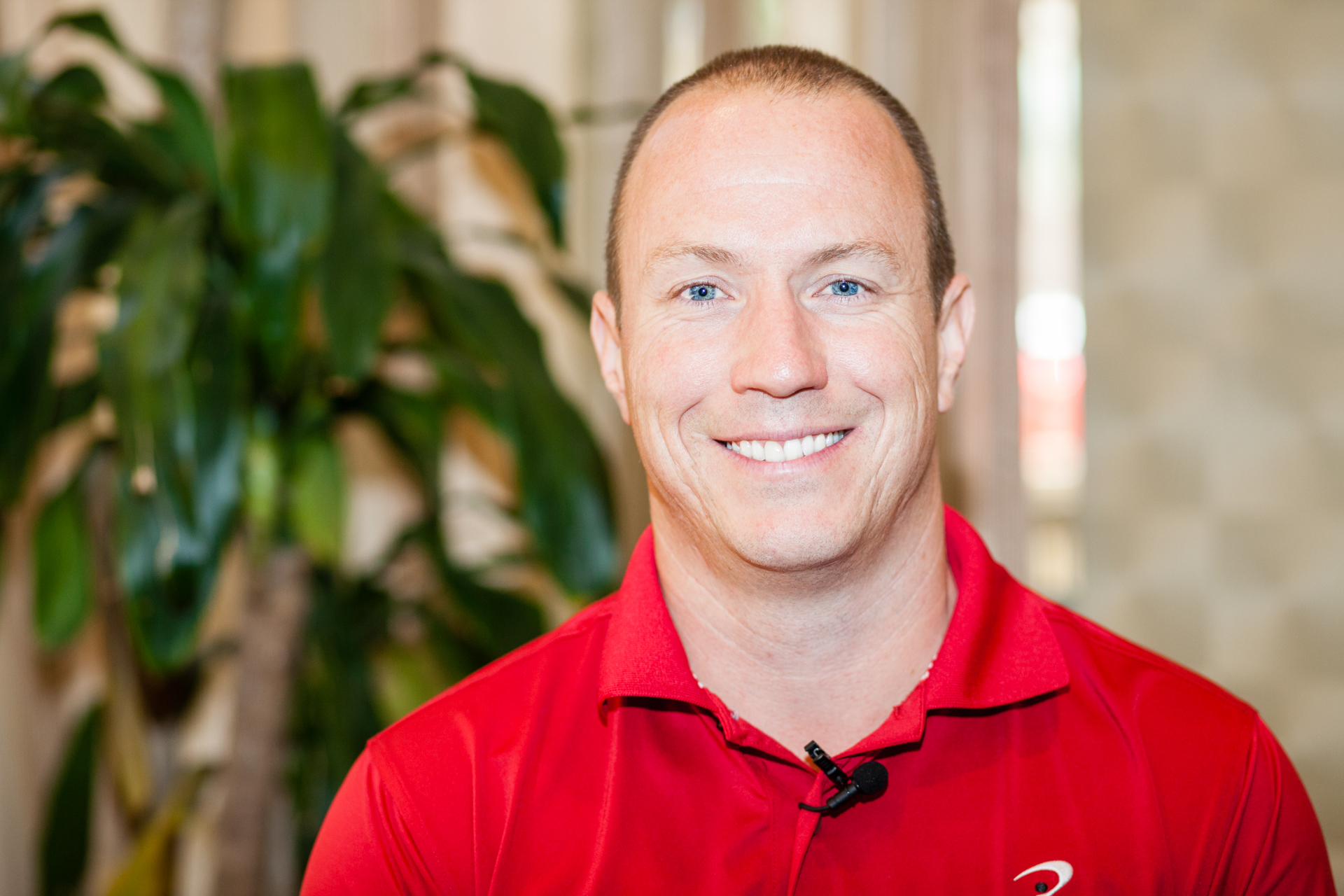IMPROVE MY GAME
Articles
Strength vs Speed: The Secret Behind the World’s Longest Hitters

If I had a dollar for overtime someone came in my gym wanting to hit the ball shorter I would be broke! Everyone, and I mean everyone wants to hit the ball farther. I have dedicated my career to making rotational athletes load and explode. Developing training techniques and coaching philosophies to squeeze out another 5 yards is no easy task. Lucky for you, we have boiled down the science of rotational power and reduced it to one simple question. Do you need strength, speed or both? At TPI we have developed some simple testing protocols to help answer this crucial question.
So many athletes think that simply getting stronger will create more power. So they set off to the gym with their pre workout shake and a handful of traditional strength exercises and wait for the squat rack and bench press to free up. “Mind if I work in a few sets?” Rarely does this approach actually yield more distance. The odd time that it does is often due to the fact that the gym-goer is either detrained or lacks the adequate strength required to play golf. At TPI we created a Golf Specific Strength Test to determine if the golfer has adequate push, pull and vertical thrust strength. In our TPI Fitness Level 2 and Level 3 classes we go deep into the strength testing protocols and learn how to analyze the results and create programming based on the data it provides us. An example of these tests is our Lower Body Split Squat Test. From analyzing 1000’s of professional and amateur golfers we were able to ascertain that golfers need to be able to split squat at least 150% of their body weight bilaterally. A 200lb golfer, for instance, would need to lift 2x 50lb Dumbbells for 8 reps. (Your body is 100% of your body weight plus an additional 50% in the form of dumbbells). If an athlete is in this range or better we deem them strong enough to play golf. If their numbers are below our minimums we would start with a strength program to improve their numbers. The recipe for strength training is simple. Progressively apply a stress to the body and the body will adapt. Put this recipe in the oven for 6-8 weeks and voilá…you will have a stronger athlete. If their strength is adequate, but their power output is still low we will switch our focus on speed training!
I used to follow the periodization protocols that were poured down our throats in University and took countless athletes through this system. Start with function screening and remove any limitations found in your screen, take them through a strength prep phase to prepare the body for the strength phase, apply the strength recipe that matches the athlete’s needs assessment and finally add power. When I applied this periodization system to my athletes I found that many of them accomplished their power and speed goals before my programming even reached the strength phase. I spent so much time in this strength prep phase with my players that I developed some truly unique exercises and novel training techniques. This gap between function and strength is something I call High Threshold Training. One of the best ways to describe it is by using the golf cart analogy. What happens when you go down a steep hill in a golf cart? It slows down! The golf cart is equipped with a governor that will reduce the speed if it exceeds a speed that is safe to take corners or stop abruptly. If you want a golf cart to go faster your first thought may be to add more horsepower. High threshold training is like improving your braking and suspension so you can better utilize the horsepower you already have! Most athletes that I see already have adequate strength, what they lack is the ability to express that strength due to gap in their training programs. That gap is high threshold training. High threshold training is about training the nervous system not the muscles. It is training the nervous system to provide the right amount of stability, mobility, strength and speed in the right part of the body at the right time. This is what makes the most powerful athletes in world look so smooth and effortless. It is training for efficiency not effort. Sometimes all you got to do is remove the governor and let the athlete express the speed and power they already posses! More info on High Threshold Training: Coach Glass Intro to High Threshold Training
I recently had the pleasure if having the 2017 World Long Drive Champion on the Coach Glass Podcast. Justin is an amazing athlete and a TPI Certified Power Coach. We talked about his training protocols where he shared how his body building and professional baseball training programs in the past helped him develop his amazing physique that can produce incredible strength. That strength however doesn’t guarantee speed and power. If it did we would be scouring Muscle Beach for the next great long drivers. Justin is an athlete who entered the sport with adequate strength and horsepower, amazing technique and an incredible mental game. What took him to the top of his game was actually his nervous system training. Training with lighter weights being moved at maximal speed forced his nervous system to adapt. This allowed him to turn raw strength and power, which he already possessed, and turn it into efficient speed. Justin says he will go back to his traditional lift like the squat, deadlift and bench during the off season to maintain his muscle but before he goes back on the World Long Drive circuit he will switch back to his kettlebell and speed programs. I personally love this approach if you have an off season of 6-12 weeks. Unfortunately, the PGA TOUR doesn’t have a full off season so our athletes need to train throughout the year in a modified periodized program. Even in the college setting athletes are challenged with a lack of down time. The college season ends and their amateur summer tournaments begin. The weekend warrior golf enthusiast also complains of a lack of time to train due to their job, family and external responsibilities that keep them out of the gym. So here is a simple formula that will help you get performance goals efficiently regardless of your lack of time! Regardless of whether you are training for strength or speed, each training session should include the following components:
Body Prep: This is an neuromuscular activation plan. Each morning you would perform a set of exercises, stretches or movement patterns that prepare the body for the day ahead and reset the nervous system to optimize function. (Neuromuscular = Nervous System interacting with the Musculoskeletal System)
Dynamic Warm Up: The dynamic warm up should be multi-plane, multi-jointed, and should incorporate unloaded movements patterns that you will be loading in your strength circuit. Here is where your high threshold exercises will come into play. It should make up 1/3 to 2/3 of the total training time depending on the phase you are in and your current condition.
Strength/Speed Circuit: The strength circuit should incorporate a Push, Pull, Vertical Thrust, Rotation/Anti-Rotation exercises and some kind of Metabolic component like a HIIT (High Intensity Interval Training). If you are training for pure speed we can work in these same patterns, but reduce the weight and increase the speed.
Cool Down: The cool down is a time to hit any smaller muscle groups that were not featured in the strength circuit, breathing exercises and simple stretches.
This formula can be manipulated and moulded to fit your current needs, time restrictions and experience in the gym. Sets and reps will be determined by your experience and goals. Are you looking for pure strength, hypertrophy or just speed? It should progress in nature from week to week with different exercises and different loads to force the body to adapt. My full 16 week LoadXplode training program is available on my Next Level members only website which follows these principles and walks you through each exercise in real time.
The next component to take into account is the Variability training principle. My athletes will always work in the the push, pull, chop, vert thrust and rotational movement patterns. The difference is that each session they will perform a different exercise in each movement pattern. Traditional programs would have you performing a bench press for push, lat pull for pull, deadlift for vertical thrust, and a pallor press for rotation for example. The athlete would perform these lifts each session over 6-8 weeks, gradually increasing the weight and decreasing the reps each week. Alternately, variability training involves a different exercises for push, pull, vert thrust each session. Sets and reps may also be varied from session to session. I have debated the benefits of each method at length with my colleagues. I argue that my athletes may not get the same pure strength gains but will be able to use the strength they gain more efficiently and athletically. I am trying to build an athlete, not a robot!
Take these concepts and incorporate them into your training programs. The key to success is to complete a thorough needs assessment to determine where you are at and where you want to go. Do you take a path of strength training or a path of speed training? The path will be revealed once you get a clear vision of your destination!

Jason Glass BHK, CSCS, TPI Advisory Board @jasonglasslab Host of the Coach Glass Podcast on iTunes Website: http://www.jasonglassperformancelab.com/